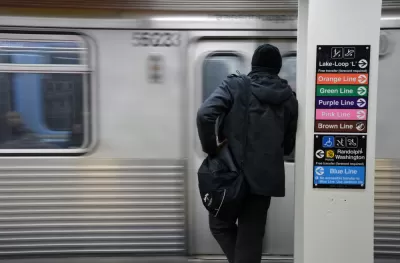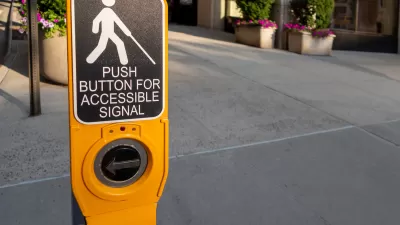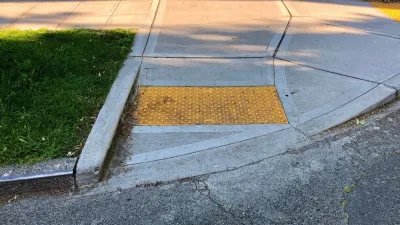The city received a federal grant geared toward improving accessibility at CTA and Metra stations, close to a third of which lack ADA compliance.

[Updated on December 20, 2022]
Chicago transit agencies will receive $185 million in federal funds targeted to accessibility improvements at Chicago Transit Authority (CTA) and Metra stations, according to an article by Alice Yin in the Chicago Tribune. Of its 145 stations, CTA has 42 non-ADA-compliant stops.
“The largest award for the city will be $118.5 million, for the CTA to modernize its Irving Park, Belmont and Pulaski stations to be fully compliant with the Americans with Disabilities Act.” The funding will also extend to the 59th/60th Metra Electric station and the 95th Street-Chicago State University station.
The federal program funding the project, called the All Stations Accessibility Program (ASAP), awarded 15 grants in nine states, all of which require the funding to support renovating inaccessible rail facilities built before 1990. “More than 900 such legacy stations remain inaccessible today, the federal government estimates.” In 2018, CTA pledged to make all of its stations accessible by 2038, a timeline unacceptable to disability advocates like Illinois Senator Tammy Duckworth, who herself uses a wheelchair. Prior to the passage of the infrastructure bill, which superseded her proposal, Duckworth introduced legislation to increase funding for accessibility.
Also attracting media attention for their accessibility grants are transit systems in Pittsburgh, New Jersey, and Cleveland. The ASAP was created by the Infrastructure Investment and Jobs Act.
FULL STORY: CTA, Metra to get $185 million in federal funding to make stations more accessible

Alabama: Trump Terminates Settlements for Black Communities Harmed By Raw Sewage
Trump deemed the landmark civil rights agreement “illegal DEI and environmental justice policy.”

Planetizen Federal Action Tracker
A weekly monitor of how Trump’s orders and actions are impacting planners and planning in America.

The 120 Year Old Tiny Home Villages That Sheltered San Francisco’s Earthquake Refugees
More than a century ago, San Francisco mobilized to house thousands of residents displaced by the 1906 earthquake. Could their strategy offer a model for the present?

In Both Crashes and Crime, Public Transportation is Far Safer than Driving
Contrary to popular assumptions, public transportation has far lower crash and crime rates than automobile travel. For safer communities, improve and encourage transit travel.

Report: Zoning Reforms Should Complement Nashville’s Ambitious Transit Plan
Without reform, restrictive zoning codes will limit the impact of the city’s planned transit expansion and could exclude some of the residents who depend on transit the most.

Judge Orders Release of Frozen IRA, IIJA Funding
The decision is a victory for environmental groups who charged that freezing funds for critical infrastructure and disaster response programs caused “real and irreparable harm” to communities.
Urban Design for Planners 1: Software Tools
This six-course series explores essential urban design concepts using open source software and equips planners with the tools they need to participate fully in the urban design process.
Planning for Universal Design
Learn the tools for implementing Universal Design in planning regulations.
Clanton & Associates, Inc.
Jessamine County Fiscal Court
Institute for Housing and Urban Development Studies (IHS)
City of Grandview
Harvard GSD Executive Education
Toledo-Lucas County Plan Commissions
Salt Lake City
NYU Wagner Graduate School of Public Service





























